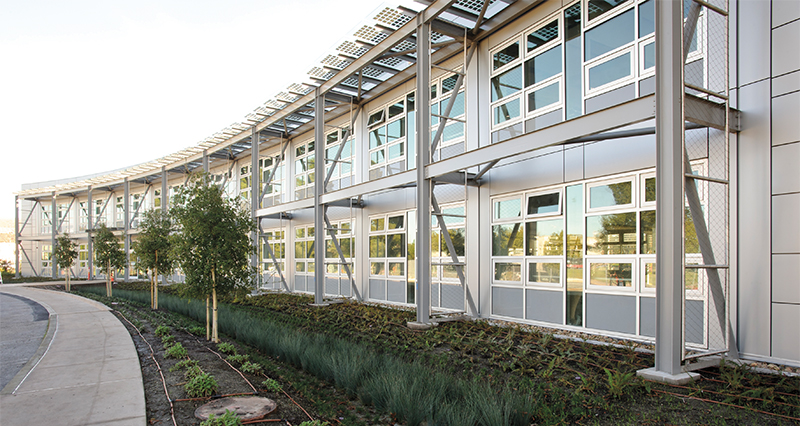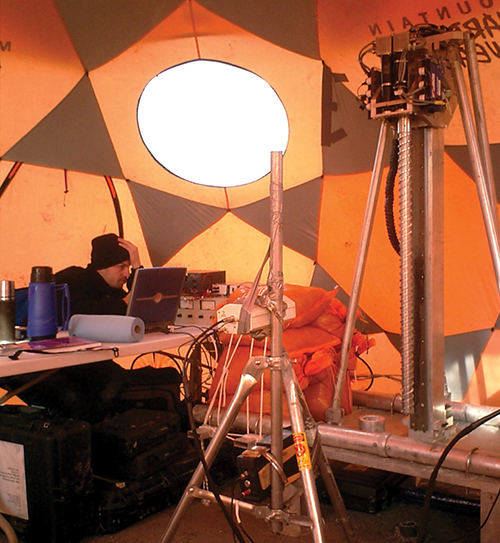
Diagnostics Tools Identify Faults Prior to Failure
NASA Technology
The Drilling Automation for Mars Exploration (DAME) project was designed to unearth the secrets of Mars—literally. The project’s engineers designed a light, low-power drill to penetrate into the Martian surface and return clues about the Red Planet’s geological makeup and ancient life that may have once thrived there.
The development of new, innovative technologies such as the DAME drill comes with an unavoidable complication: the consequent introduction of new and unknown ways those technologies can develop faults and failures. To anticipate these problems, NASA engineers use specialized software that monitor system performance during virtual and actual testing, identifying and diagnosing abnormalities.
For DAME, one of the diagnostic technologies used to evaluate the drill’s performance was the Hybrid Diagnostic Engine (HyDE), developed at Ames Research Center by a team led by Sriram Narasimhan, a researcher in the Prognostics Center for Excellence (PCoE). HyDE observes sensor signals from the system being tested and compares those measurements with the anticipated behavior previously established from a model of that system, explains Kai Goebel, head of the PCoE at Ames.
“If the two disagree, then HyDE tries to determine whether that represents a malfunction or not,” he says. “It tries to find the root cause of a particular abnormal condition.” In DAME’s case, HyDE successfully identified approximately 85 percent of the faults the drill developed during testing.
For space vehicles and habitats, it is very important to be cognizant of the health of the systems, Goebel says, to ensure the safety of operations. Because the same holds true on Earth, one company has partnered with NASA to advance the HyDE technology for terrestrial applications from automobiles to geothermal systems for the greenest Federal building in the Nation.
Technology Transfer
Impact Technologies LLC, based in Rochester, New York, has partnered with NASA on many prognostics and health management projects, including fault diagnosis in jet engines and automated contingency management tools that allow vehicles to alter their performance to accommodate faults and avoid complete failure.
“The common thread for all of our developments is trying to figure out when machines are going to break, and then what you can do if they do break,” says Jeff Hoffman, project manager at Impact.
Collaborating with Ames through the Small Business Innovation Research (SBIR) program, Impact extended HyDE’s capabilities and then commercialized the tool.
Benefits
Impact incorporated HyDE into its ReasonProX software suite. The software integrates HyDE with the MATLAB/Simulink environment, a popular commercial setup for modeling and simulation. This allows users to identify potential faults and craft solutions during the design phase, saving time and money in the development of systems for controlling and monitoring everything from printers to automobiles, power generators, and robots.
“We built tools around HyDE that allow people to model physical systems like a car in MATLAB, send information to the diagnostic engine, and get results back in the same environment you use to run your model. You can figure out how your car might break, all on your workstation using our software,” says Mark Mosher, also a project manager at Impact.
Hoffman says that the company is finding applications for ReasonProX in the wind turbine market and will be incorporating the software into a helicopter diagnostics platform. In the meantime, NASA’s partnership with Impact has also resulted in benefits for the Agency: Impact’s spinoff technology is now part of the NASA Sustainability Base at Ames, which incorporates a host of aerospace innovations into a unique “smart” office building that can adapt its energy use depending on weather, season, and work patterns. Impact’s software modeled and now monitors the base’s geothermal heating and cooling system.
Benefits for both sides is typical of partnerships between NASA and private industry, says Goebel. “We find that these kinds of collaborations are an inspiration that drives technology development.”
ReasonProX™ is a trademark of Impact Technologies LLC.

The DAME drill during summer field tests on Devon Island, NASA’s Mars analog site. The devices at center are laser vibrometers that measure the movements and vibrations of the drill when in use.

NASA’s Sustainability Base at Ames Research Center is expected to be the greenest building in the Federal Government. The building features a number of “smart system” technologies designed to make it adaptable to changes in sunlight, temperature, and usage. Among the technologies employed in the building is Impact Technologies’ spinoff software, which monitors the base’s geothermal climate control system.













